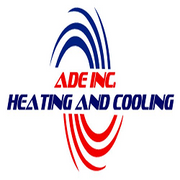Why is water dripping from your furnace? Click here to read more...

You rely on your furnace to generate hot air, so spotting a leak from the device can be alarming. Although this is unusual, there are several causes for this problem that can be solved with minor fixes, while others will require the help of a furnace repair technician. Here’s what to know about leaky furnaces so that you can deal with the issue appropriately.
High-Efficiency Condensing Furnaces
Furnaces are generally available in two configurations: high-efficiency condensing furnaces and conventional (non-condensing) furnaces.
High-efficiency furnaces generate condensation as a byproduct of their design. Since they rely on two heat exchangers, one more than a conventional model, they absorb enough heat that gas discharged through the exhaust changes to a liquid state. These furnaces can typically be distinguished by their white PVC exhaust pipe and their AFUE (Annual Fuel Utilization Efficiency) rating of 90% or higher.
Leaks in these furnaces typically occur due to blockages or breaks in the condensate drains, condensate pump, or drain line. A furnace repair technician may have to fix or replace one of these parts, but check the drain trap for built-up dirt and debris first. If it’s clogged, use a shop-vac to clear it and see if that resolves the issue.
Conventional Furnaces
Unlike high-efficiency furnaces, conventional furnaces are not meant to leak water at all. Dripping in conventional furnaces usually occurs as a result of either a leaky humidifier or an improperly designed vent pipe.
Humidifiers are small units attached to your furnace with hookups for water, electricity, and drainage. They add moisture to warm air to keep interior spaces comfortable.
However, if the filter or drain in the humidifier is clogged, condensate inside it may be forced onto the floor beneath it. This problem must be investigated by an HVAC specialist to determine the cause before repairs can be made.
Conventional furnaces include a metal exhaust pipe designed to gather and vent gases generated during the heating process. Gas exhaust should be discharged from your home while still warm, before it has time to cool and condense.
If the exhaust is too large or its upward angle isn’t steep enough, exhaust can slow down and settle in the pipe as water, which can leak. A furnace repair specialist may be able to adjust your exhaust pipe to resolve this issue, or they may recommend a replacement of the component.
If you need help diagnosing and repairing a suspected furnace leak, contact ADE Heating and Cooling in Forked River, NJ. These heating and cooling specialists have over 30 years of experience repairing and maintaining commercial and residential HVAC equipment. To schedule a maintenance appointment, call (609) 693-6050, or visit them online to learn more about their services. NJ Master HVACR Lic # 19HC00136200 NJ Master HVACR Lic # 19HC00400200 NJ Master Plumbing Lic # 36B100668500
About the Business
Have a question? Ask the experts!
Send your question

